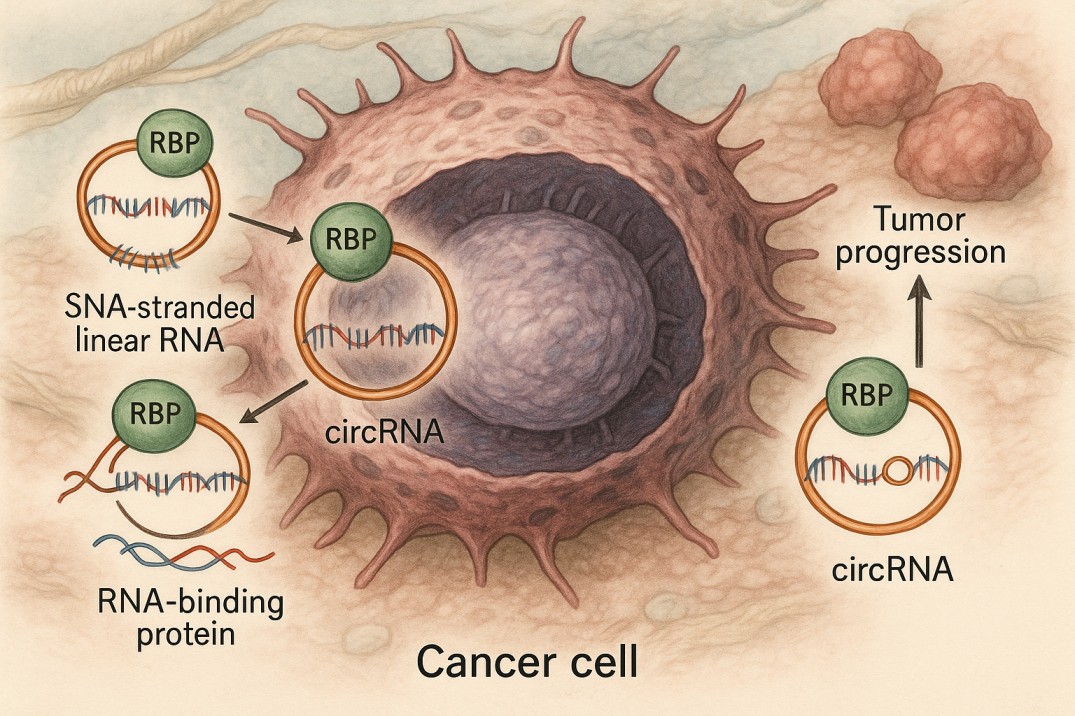RNA-binding proteins and circular RNAs in cancer have emerged as powerful regulators of tumor behavior. These molecular players are reshaping our understanding of how cancer cells grow, adapt, and evade treatment. By decoding their interactions, researchers aim to discover new tools for early diagnosis and therapy.
How RNA-Binding Proteins Influence Cancer
RNA-binding proteins (RBPs) regulate critical steps in RNA metabolism — including splicing, translation, and stability. When their expression becomes dysregulated, RBPs can drive tumor development, promote metastasis, and resist treatment. For example, proteins such as HuR and IGF2BP1 are frequently overexpressed in aggressive tumors and have been shown to stabilize oncogenic mRNAs, enhancing cancer cell survival (Cell Death Discovery).
The Expanding Role of Circular RNAs in Cancer Biology
Circular RNAs (circRNAs) are a class of non-coding RNAs formed by back-splicing, creating loop structures that resist degradation. Their roles in cancer are multifaceted: they act as molecular sponges for microRNAs, regulators of gene transcription, and partners of RBPs. For instance, circRNA ciRS-7 has been found to sponge tumor-suppressive miR-7, promoting oncogene expression in colorectal and liver cancers (Molecular Cancer).
Interplay Between RNA-Binding Proteins and Circular RNAs in Cancer
The relationship between RNA-binding proteins and circular RNAs in cancer is complex and reciprocal. RBPs can regulate the formation of specific circRNAs, while circRNAs can sequester RBPs, altering their availability. This tug-of-war controls the fate of numerous cancer-related transcripts. A review in Trends in Cancer highlights how this axis influences epithelial-to-mesenchymal transition (EMT), a key process in metastasis.
Clinical Relevance and Future Perspectives
Given their stability and tumor-specific expression, circular RNAs are being studied as biomarkers for liquid biopsies. Meanwhile, RNA-binding proteins are attractive therapeutic targets because of their ability to modulate multiple oncogenic pathways simultaneously. According to recent Oncogene insights, disrupting circRNA–RBP complexes may provide a novel way to shut down cancer-promoting networks.
As this field evolves, targeting RNA-binding proteins and circular RNAs in cancer may lead to more precise, personalized cancer therapies.
Explore More: https://innovatemed.org
Disclaimer: This content is for informational purposes only and does not constitute medical advice. For medical concerns, consult a licensed healthcare professional.


